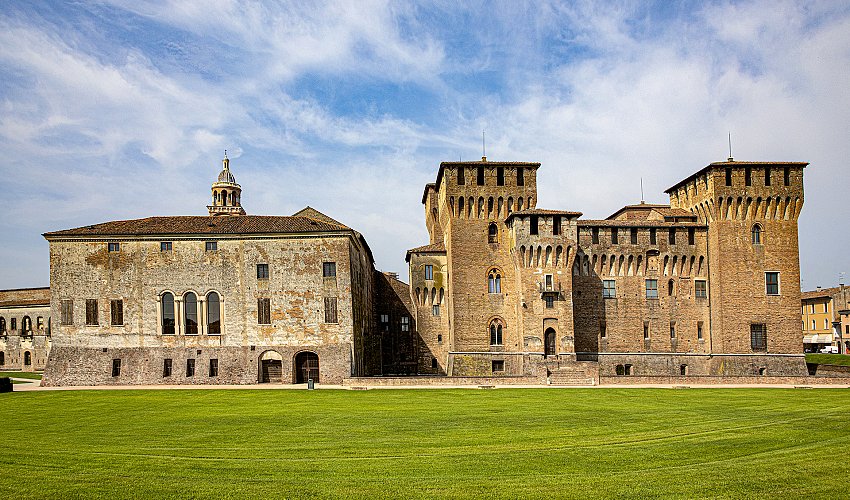The splendid Palazzo Ducale: the residence of the Gonzagas, lords of Mantua

Overlooking Piazza Sordello, the Palazzo del Capitano is the oldest building in the entire Palazzo Ducale. Commissioned by Guido Bonacolsi at the end of the 13th century and initially built on two floors, in 1300 it was raised by one floor and joined to the Magna Domus, from which it was separated by an alley. The second additional floor consists of a huge, single hall (about 1000m²) called the Armory or also known as the Diet Hall, as it hosted the congress of the same name in 1459.
The Magna Domus and the Palazzo del Capitano, will constitute the original nucleus, which later gave shape to the Corte Vecchia.
In the middle of the 14th century, in some of the rooms, Pisanello put his hand to a majestic cycle of frescoes with an Arthurian chivalric subject, depicting the battle of Louverzep. The work was intended to glorify the family of the client Gianfrancesco Gonzaga, not surprisingly, also depicted in the painting. It was during the 1960s and 1970s, thanks to the superintendent Giovanni Paccagnini, that Pisanello's great work was discovered and subsequently restored. The rooms of the Pisanello show fragments of the frescoes, together with the relative preparatory synopies.
It was in 1519 that Corte Vecchia regained new prestige, as Isabella d'Este left her residence in the Castle and moved to the ground floor of this ancient sector of the Gonzaga palace, in the so-called widow's apartment. The apartment consisted of two wings, now divided by the entrance to the Cortile d'Onore.
The wooden furnishings and art collections of the two famous studios, the cave and the studio, moved to the wing of the Grotto with the princess. The latter contained paintings preserved in the Louvre museum, coming from the Studiolo di Castello, commissioned between 1496 and 1506 from Mantegna (Parnassus and Triumph of Virtue), from Perugino (Lotta between Love and Chastity ) to Lorenzo Costa the Elder (Isabelle d'Este in the kingdom of Harmony and the Kingdom of Como) to which were added the works of Correggio (Allegory of Vice and Allegory of Virtue). Another famous room in this wing is the "Camera Granda" or "Scalcheria" frescoed in 1522 by Lorenzo Leonbruno.
The apartment included other rooms in the wing known as the Santa Croce from the name of an ancient church of the Matildic period on the remains of which representative rooms were obtained such as the Sala delle Imprese Isabelliane, the Sala Imperiale or Sala del Camino, the Sala delle Calendule , the Hall of Plaques and the Hall of Enterprises. Subsequently Guglielmo Gonzaga (1550-1587), will transform the rooms of Corte Vecchia by creating the Refectory overlooking the Hanging Garden and the Hall of the Mirror for music.
Full Article: agriturismo.life






